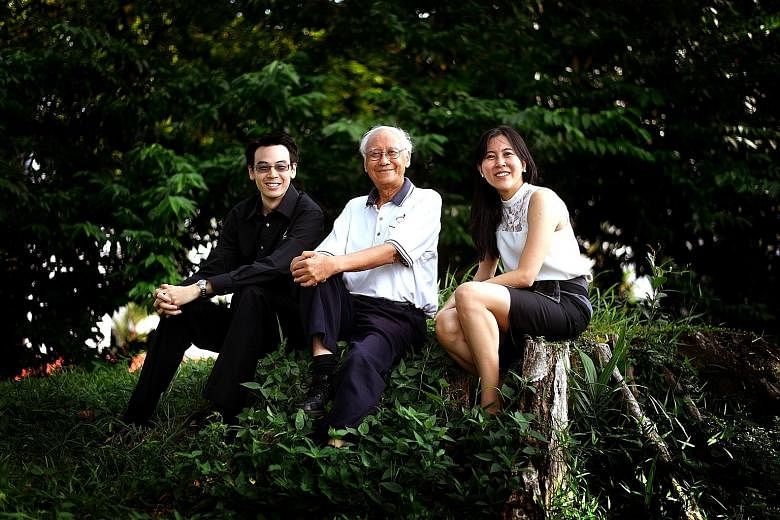It is not just Buzz Lightyear who wants to go to infinity and beyond. Like the Toy Story star, Singapore too has space ambitions.
Even though commercial travel through space may still be some light years away, the Singapore Space and Technology Association (SSTA) believes the Republic can reach for the stars in other ways.
The development of space technology - such as in satellites, satellite communications and image data analytics - is one area with potential, said Ms Lynette Tan, director of the SSTA, which is celebrating its 10th anniversary next week.
The country has already made strides in this area over the past decade, she noted.
For example, Nanyang Technological University last month launched its seventh satellite into orbit from the International Space Station.
The Aoba Velox-III will conduct tests to assess the durability of commercial off-the-shelf microprocessors in space, including a micro-propulsion system, consumer-grade electronic components and a wireless communication system.
"When we first started SSTA in 2007 with the intention of developing Singapore's space industry, people thought we were crazy as they immediately think of large rockets and moon landings," said Ms Tan, who is one of the founding members of the association.
"But, now, people are more aware there is more to space than just rockets and astronauts, so they are genuinely curious.
"They want to know more about the industry, and how Singapore can progress."
There are now about 40 space-related companies, including local and locally based foreign ones, said SSTA president Jonathan Hung. This is about a 30 per cent growth over the past decade, he added.
SSTA is a non-profit association focused on developing Singapore's space technology industry. It also facilitates information and communication for the Government, the space industry and academia.
-
A lift from rocket science, and more
-
SEE BETTER
Many people are familiar with Lasik surgery, the procedure that helps people see better. But few would know the technology was first used to help a space shuttle do the same.
Laser-Assisted In Situ Kerato- mileusis (Lasik) technology involves the use of an eye-tracking device to ensure the cornea is re-shaped correctly.
This tracking system was based on technology developed to assist spacecraft in delicate docking manoeuvres.
FEEL BETTER
Aerogel is a lightweight material used in making extreme- weather clothing and the insoles of footwear, to keep the wearer warm.
A robust, flexible form of the substance, which was first invented in 1931, was developed for the Space Shuttle to ensure the liquid oxygen and hydrogen fuel on board would not freeze.
LIVE BETTER
The pacemaker is a device planted in the chest to help regulate the beating of the heart.
US-based Pacesetter Systems has developed such devices that incorporate multiple technologies in collaboration with the National Aeronautics and Space Administration (Nasa).
They include the first rechargeable, long-life pacemaker battery, which is based on technology for spacecraft electrical power systems.
By imbuing the pacemaker with bidirectional telemetry - developed by Nasa to facilitate two-way communication with satellites - it allowed doctors to communicate with an implanted pacemaker and reprogram it without surgery.
DEVELOP BETTER
In outer space, sunlight is the main source of power.
Nasa-developed technologies are systems that are efficient and as lightweight as possible.
Technologies for space-based applications also help lower the cost of solar energy on Earth.
Audrey Tan
•Sources: Nasa, Space Foundation
Next week, it is organising the ninth Global Space and Technology Convention, which aims to bring together the best minds in the international space industry .
The two-day conference, which starts on Thursday, will feature speakers such as Mr Barry Matsumori, senior vice-president of business development and advanced concepts at Virgin Galactic, the world's first commercial spaceline, and Professor Daniel Hastings, chief executive of the Singapore-MIT Alliance for Research and Technology.
Singapore will also be well represented, with the likes of ST Electronics, home-grown satellite technology developer Addvalue Technologies and local start-up Transcelestial Technologies .
While space technological developments in satellites and their applications may not be as "sexy" as the possibilities of space travel or life on Mars, Ms Tan said technology designed for outer space could eventually be used to improve life on Earth.
Devices used in space are engineered to withstand the tough conditions there, such as extreme temperatures and large doses of radiation.
If the devices can cope with those conditions, they would perform even better on Earth.
"So, for example, if we can get a rover to move 10m in space," said Ms Tan, "it might be able to go 100 miles" - or 160km - on Earth.
Some space technologies have been adapted for use on Earth.
First designed to provide power in outer space, solar panels are now a source of alternative energy to combat global warming, she noted.
In 2013, the Singapore Economic Development Board (EDB) established the Office for Space Technology and Industry to pursue "New Space" opportunities, said EDB assistant managing director Beh Kian Teik.
The "New Space" economy is one where small satellite applications and technologies are emerging rapidly, due to advancements in electronics and the continued reduction in launch costs, he added.
"With Singapore's strengths in adjacent industries such as aerospace engineering, electronics and precision engineering, Singapore is well poised to ride on the wave of these opportunities," said Mr Beh.
The global space industry stood at US$323 billion (S$459 billion) in 2015, according to the Space Foundation Report.
Mr Hung said: "The space industry is an emerging field.
"Singapore should future-proof itself so it can capture the market when it takes off."


